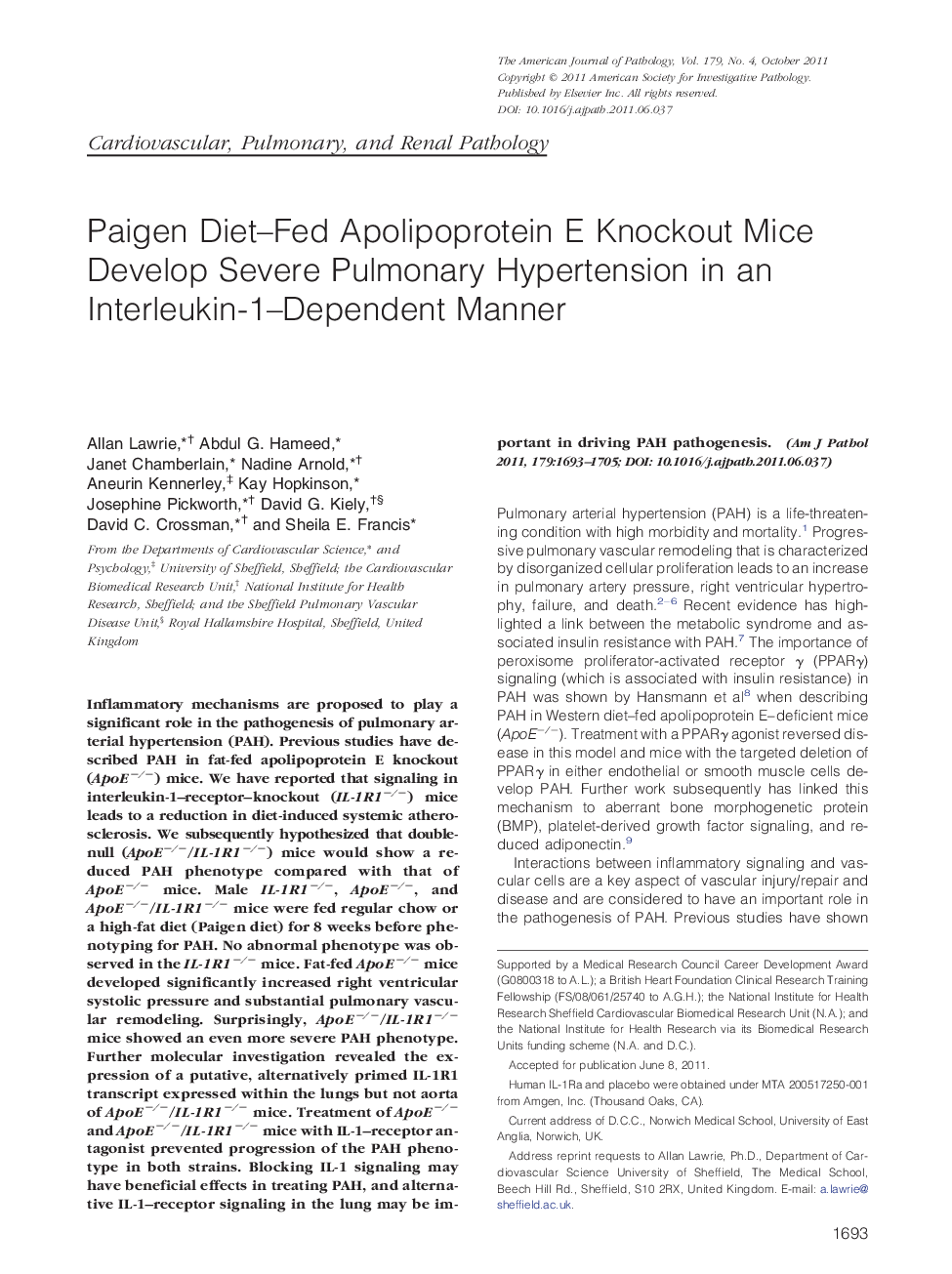| Article ID | Journal | Published Year | Pages | File Type |
|---|---|---|---|---|
| 5939229 | The American Journal of Pathology | 2011 | 13 Pages |
Inflammatory mechanisms are proposed to play a significant role in the pathogenesis of pulmonary arterial hypertension (PAH). Previous studies have described PAH in fat-fed apolipoprotein E knockout (ApoEâ/â) mice. We have reported that signaling in interleukin-1-receptor-knockout (IL-1R1â/â) mice leads to a reduction in diet-induced systemic atherosclerosis. We subsequently hypothesized that double-null (ApoEâ/â/IL-1R1â/â) mice would show a reduced PAH phenotype compared with that of ApoEâ/â mice. Male IL-1R1â/â, ApoEâ/â, and ApoEâ/â/IL-1R1â/â mice were fed regular chow or a high-fat diet (Paigen diet) for 8 weeks before phenotyping for PAH. No abnormal phenotype was observed in the IL-1R1â/â mice. Fat-fed ApoEâ/â mice developed significantly increased right ventricular systolic pressure and substantial pulmonary vascular remodeling. Surprisingly, ApoEâ/â/IL-1R1â/â mice showed an even more severe PAH phenotype. Further molecular investigation revealed the expression of a putative, alternatively primed IL-1R1 transcript expressed within the lungs but not aorta of ApoEâ/â/IL-1R1â/â mice. Treatment of ApoEâ/â and ApoEâ/â/IL-1R1â/â mice with IL-1-receptor antagonist prevented progression of the PAH phenotype in both strains. Blocking IL-1 signaling may have beneficial effects in treating PAH, and alternative IL-1-receptor signaling in the lung may be important in driving PAH pathogenesis.
